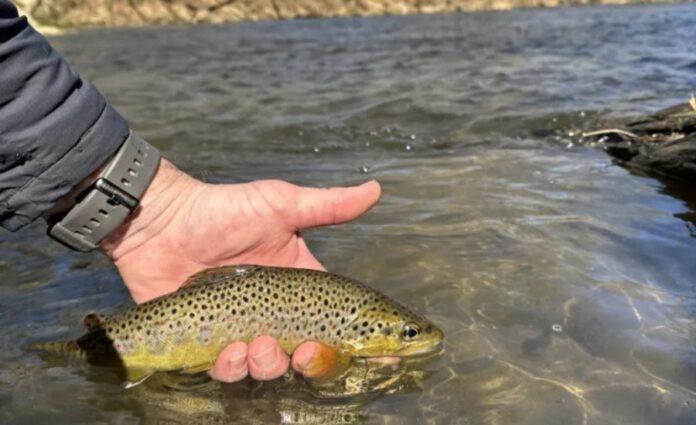Written By: Bryan Donoway, Flys in Disguise
All Photos by Flys in Disguise
The Gunpowder river in Maryland comes alive during spring, as warming daytime temperatures boost insect activity, motivating wild browns to stir from their winter slumber and begin packing on the pounds. By the time the frogs are chirping their nightly serenades in March, anglers should be ready to take advantage of the early-season action here.
In a typical year, springtime flows will be high and cold, until the occasional sunny day that will drive temperatures up to that magical 50-degree mark when the bugs become more active. During peak afternoon heat on those warm days, watch for emerging mayflies. Hendricksons appear first, but their time is very short on the Gunpowder, so this hatch can sometimes seem like it ends before it even begins. March Browns will follow, and later in the spring, the Sulfurs–the Gunpowder’s most prolific mayfly species–will begin hatching in abundance. I prefer to fish all these hatches using a dry/dropper rig, with a 5X leader that is at least 9 feet long, plus 18 inches of 6X tippet to the dry fly, and a 6- to 8-inch piece of 6X to the dropper fly.

Early in the season, frequent rains can blow the river out, leading to dangerous wading conditions, so be aware and pick your days carefully. Fortunately, since the Gunpowder is a tailwater, the river tends to clear up rather quickly after these events, returning to fishable conditions within a day or two. As flows drop after a rain event, the trout hold on seams and edges, waiting for food carried by the swifter water. While off-color water makes sight-fishing more difficult, it also makes approaching wary trout a bit easier, at least compared to the gin-clear conditions of high summer.

As the flows continue to fall and the water temps continue to rise, the fish move away from those edges and current seams, and begin their normal springtime feeding patterns in the faster runs, foraging for small insects that begin to emerge from the depths. During this period of late spring, swinging wet flies high in the current will attract attention and usually draw a strike. Flies like Partridge and Orange, Partridge and Yellow, and Hare’s Ear Wet flies in sizes 14-16 are always good. And a rig using two different wet fly patterns spaced about a foot apart can allow you to cover a ton of water with minimal effort.
Byran Donoway is owner/operator of Flys in Disguise in Jarrettsville, MD.
Credit: Source link






























